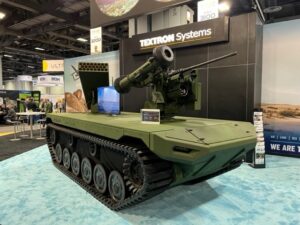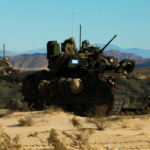
After providing its Ripsaw robotic platform to the Army for experimentation, Textron Systems [TXT] is looking to offer a new swim-capable, smaller version of the system for the Army’s expected upcoming Robotic Combat Vehicle-Light (RCV-L) competition. Textron showcased a concept demonstrator of the new Ripsaw M3 at this week’s Association of the United States Army’s (AUSA) annual conference in Washington, D.C, with a company official highlighting the platform’s modularity and design considerations for potential RCV-L requirements. “It’s intended for us…

 By
By 











